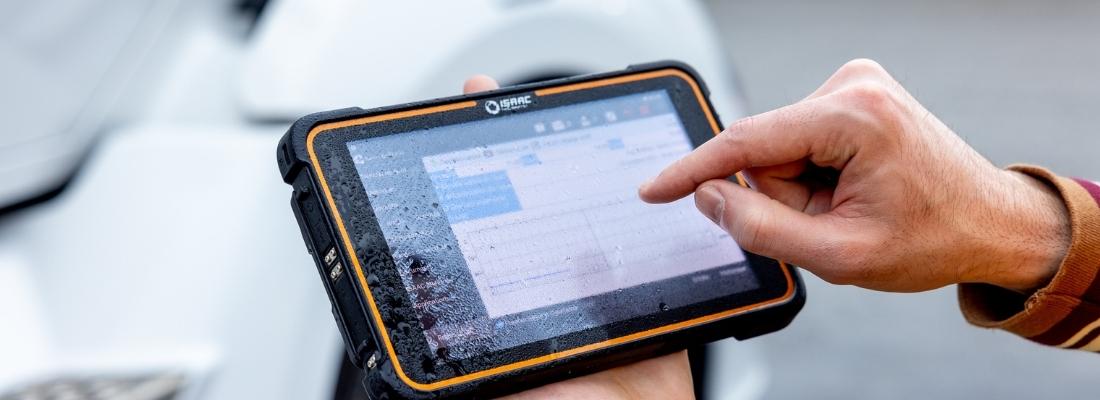But rest assured: hours of service regulations aren’t changing—only how you log them is. As a professional driver, you already know the rules. All you need now is to learn how to log your activities electronically instead of with pen and paper.
We have supported many drivers in making the transition to ELDs. Here are a few tips to help you get comfortable using the technology and appreciate its benefits.
Preparing for change
All change requires an adjustment period. Don’t be too hard on yourself, and take the time you need. Here are a few ideas to help you prepare to use an electronic logging device.
- Attend your company’s training seminars about using ELDs.
- Read the available documentation.
- Watch training videos from your ELD supplier.
- Don’t be afraid to ask questions.
- Find other drivers in your company who have already transitioned or who are more technology savvy. Get their phone number so you can reach out if you have questions.
Download our change management guide
Starting to use your ELD
Starting to use an ELD to log your hours of service means integrating new habits to your routine. Over time, those gestures will come naturally and you won’t give them a second thought.
Before your trip
- Make sure your electronic logging device is in good working order and ready to record data, with no error messages.
- Check whether you have all necessary documentation, i.e.
- A user guide
- Instructions on ELD data transfer methods and how to generate and transfer hours of service data to an inspector
- Instructions on what to do in the event of ELD malfunction
- A sufficient number of daily logsheets to log required information under article 82, i.e. at least 15 days in Canada (8 days in the USA)
Download: 2022 Canadian ELD Compliance Checklist
At the start of your shift
- Log into your ELD and review unassigned driving segments.
- E-sign any outstanding unsigned daily logs.
- Before moving your truck, make sure you have had enough hours of rest to comply with regulations for the territory you are traveling in.
- The ELD automatically records driving activity as soon as the truck reaches a speed of 8 km/h or 5 mph, and these log entries cannot be changed.
- Check that trailers are ready to go. Call ahead to see whether your load is ready.
- Yard moves constitute driving activity and are automatically logged. Moves do not count toward your driving hours, but they are added to your hours of service. This activity cannot be changed.
During your shift
- When you stop your vehicle and your drive is over, make sure to switch your service status as soon as possible. If you do not confirm the end of your drive, six minutes of additional driving time may be added to your daily log (ELD requirements – technical standard 4.4.1.2).
- Get to know your ELD’s roadside inspection function. You have to know how to transfer data to inspectors to avoid violations.
- Use the roadside inspection guide. If data transfer fails, record the error to let your carrier know and display the report on-screen.
At the end of your shift or trip
Once your activity is complete and you leave your truck, log out of the ELD. That way, driving time cannot be assigned to you in the event the truck is moved by another driver.
Don’t forget!
Transitioning to ELDs brings change. But if you know what lies ahead, you’ll be able to avoid any surprises. Choosing an ELD that is easy to use makes adoption easier.
ISAAC electronic logging devices were designed with the trucking world in mind. You get step-by-step guidance through your workflow, and your logbook is automatically updated with your activities. Forms are pre-filled with information from your transport management system to limit manual entry using the tablet.
ISAAC also offers remote support to help make the transition as smooth as possible. You can get help from your office colleagues at all times. They can access your ELD to guide you and answer your questions easily.
Discover how ISAAC can help you make the transition easier.


